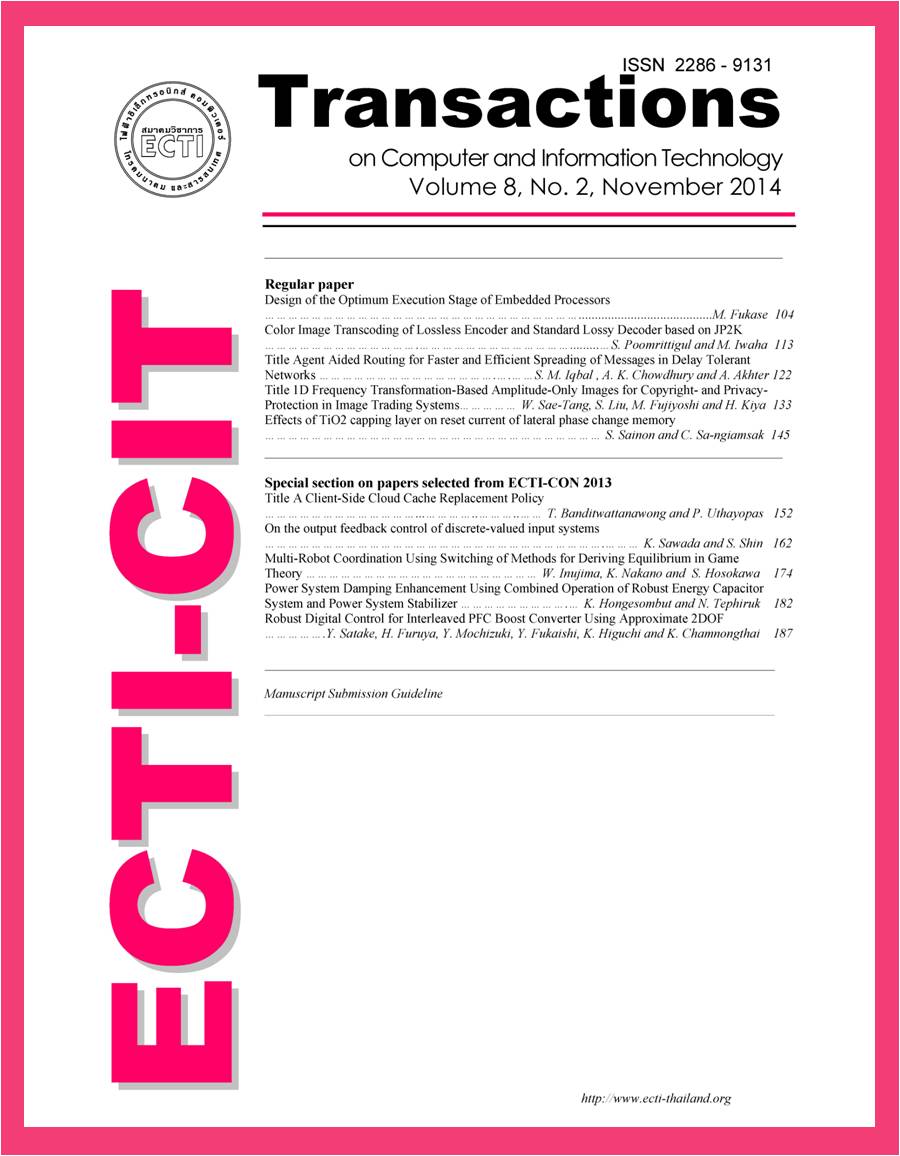Effects of TiO2 capping layer on reset current of lateral phase change memory
Main Article Content
Abstract
Lateral Phase Change Memories (LPCMs) gained a lot of interesting due to its simpler fabrication process and lower reset current comparing with verticalstructure phase change memories. The capping layer can be easily fabricated and changed on the active phase-change region of LPCM. The knowledge of capping layer on the thermal generation and diffusion on LPCM can provide an alternative design approach to alleviate the high reset current issue of PCM. The location and thickness of TiO2 capping layer were studied in order to achieve higher power consumption efficiency using finite element analysis. The four LPCM structures with various location of capping layer were modelled. The simulation results found that addition of TiO2 capping layer can increase power efficiency. The suitable location to place TiO2 capping layer is at the centre of the active phase-change layer found in Model 4. The thickness of capping layer was developed based on Model 4; and thickness of 40nm was given the best result. The combination of proper location and thickness of TiO2 capping layer can offer a reduction of the LPCM reset current by 24%.


